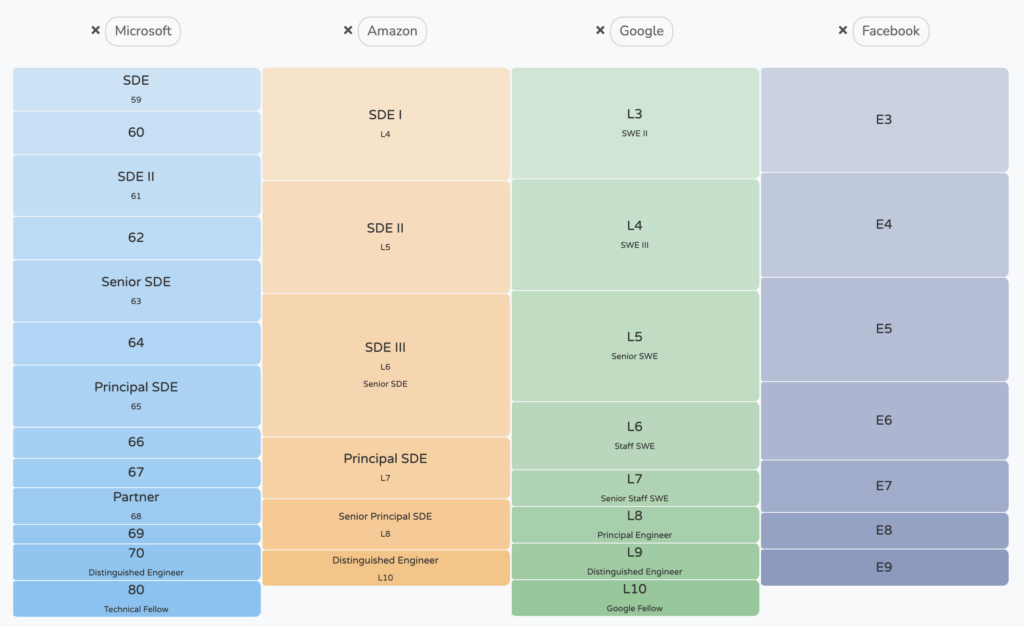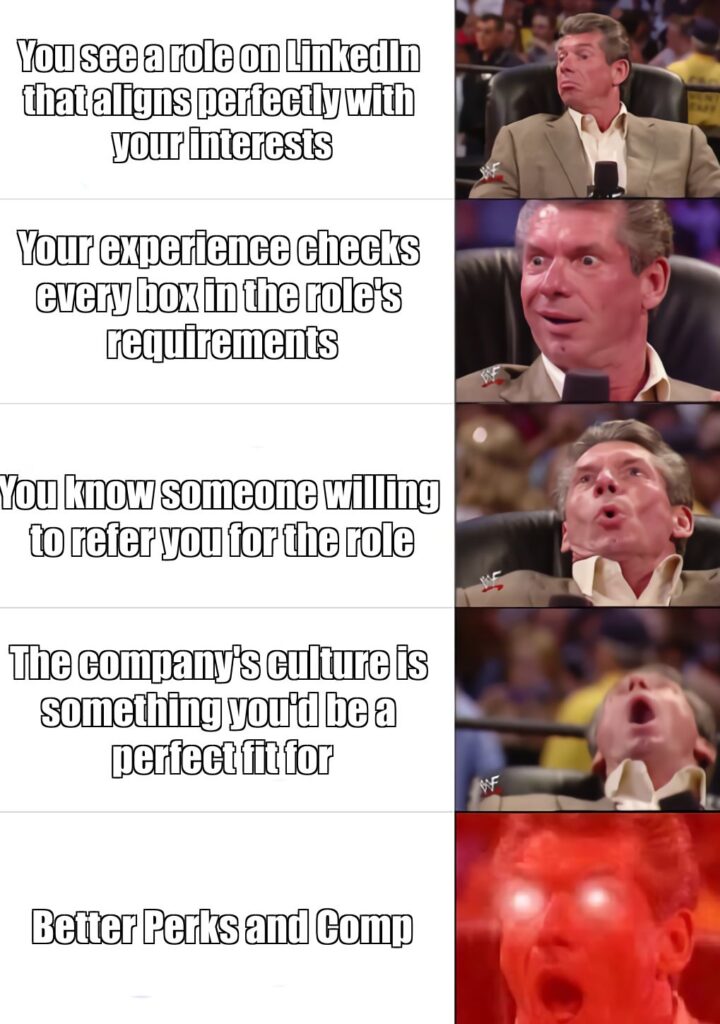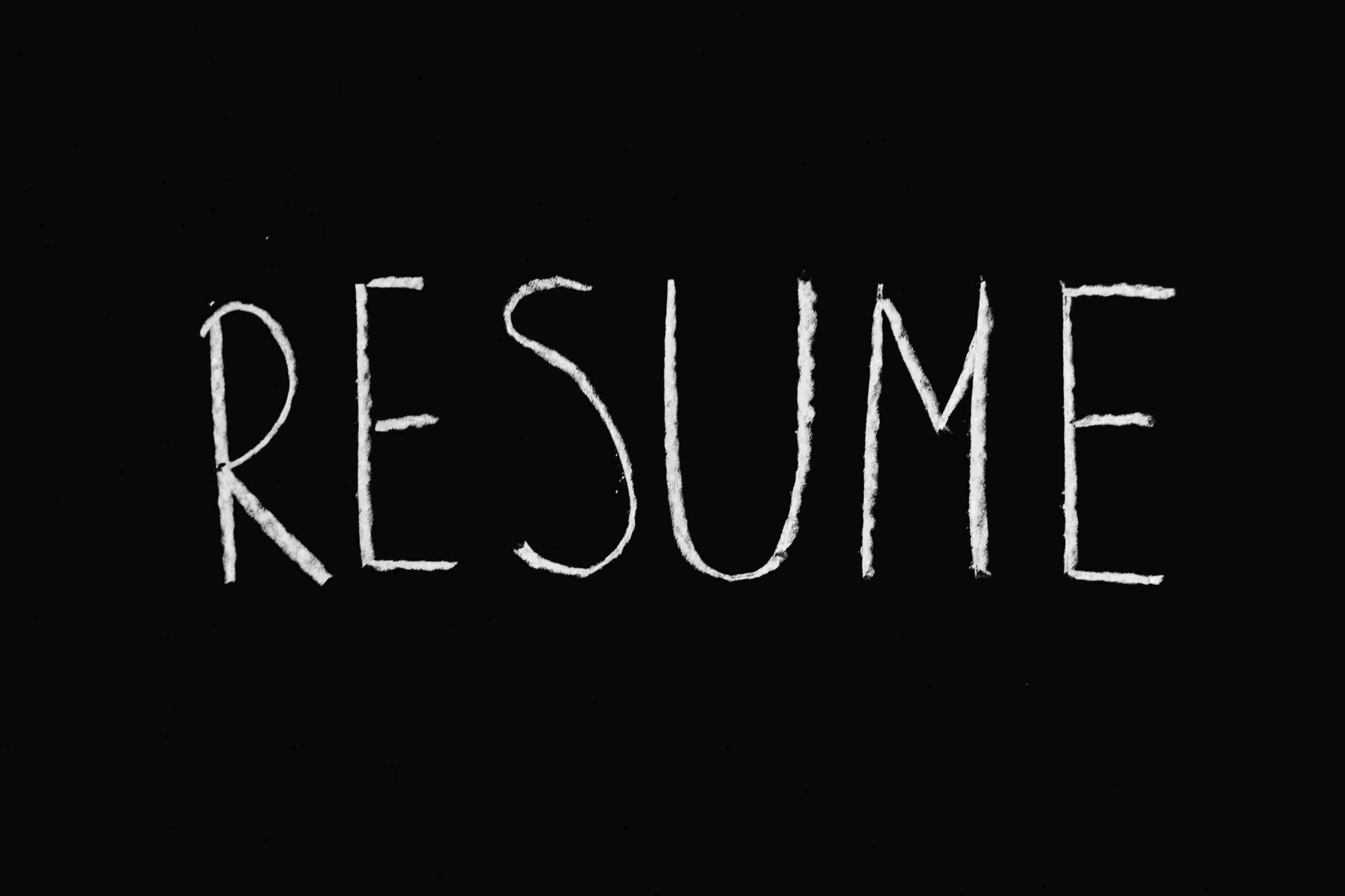Okay, this one isn’t exactly for the “wider non-technical audience” that I intended to write for in the first place. But as it turns out, two of the most frequent messages I receive on LinkedIn are requests for referrals and resume reviews (which eventually turn into a request for a referral).
Depending on your years of experience and the position you’re applying for, the kind of interview you’d have to go through might vary. Most technical interviews would have 4 rounds of in-person technical interviews in addition to a phone screening.

For instance, if you’re still relatively new to the industry and applying for one of the SDE-1 equivalent positions, your technical interviews would most likely be focused on Algorithms and Data structures.
If you’re applying for a specific niche in the industry, you might have some rounds of your interview dedicated to specific subjects.
If you’ve been in the industry for a while, you already know all of this and can probably stop reading to save yourself some time 🙃.
This post will cover some of the things to watch out for when working on your own resume.
The Resume Game

Well, all of this means nothing if your resume doesn’t catch a recruiter’s attention and so this is where we begin.
The first hurdle in the job application process is having your resume stand out. They say a recruiter spends an average of 6-8 seconds per resume. So the name of the game here is to make relevant experiences and skills easier to spot and make it easy for a recruiter to find what they’re looking for on your resume.
#1 – Does size matter?
When it comes to your resume, it does. If you ask me, an ideal resume is just one page. If you really must, a second page to your resume mayyyyybe okay. As I’ve already mentioned, a recruiter spends not more than a couple of seconds per resume. If you have multiple pages, this means a lesser amount of time per page.
A neat way to manage everything on a single page is by using the right template. I personally use the Deedy template. Overleaf lets you edit this template for free too.
#2 – Be picky
It’s time to go over the stuff you’re actually going to pen down. You have a very finite amount of space in your resume so it’s important to be conscious about what you decide to add to your resume. For starters, pick out on which of your experiences are most relevant to the role you’re applying for. Remember the neat little python script you worked on during college? It might not be really relevant to the role you’re applying for and might be best left out of your resume.
As much as your recruiter or an interviewer tries to avoid forming an opinion or introducing any biases, it’s human nature to try and get a “sense” of what you can expect from a candidate during an interview. And going through a resume that undersells your work isn’t going to help.
This does mean that you might need to tweak your resume for each role you’re applying for. It’s a lot of work… I know. But given the significant weight we place on this small document, putting in some extra effort might be well worth it.
#3 – Emphasis keywords
This one is a no-brainer. Consider the following sentences.
Built a service using Go with the gin framework to convert foo to bar
Built a service using Go with the gin framework to convert foo to bar
If you’re applying for a position that requires experience working with Go, the second sentence is going to be worth a lot more than the first one. It clearly emphasises that you’ve worked on Go and Gin and there’s absolutely no way that a recruiter is going to miss that detail. At the same time, emphasise keywords sparingly. If everything is emphasised, well then nothing really is.
#4 – Quantify your impact
Once again, consider these two sentences.
Built a service using Go with the gin framework to convert foo to bar
Built a service using Go with the gin framework to convert foo to bar. Led to a 30% reduction in COGS in XYZ
As we’ve already discussed, the second sentence emphasizes relevant keywords. But more importantly, the second sentence also covers the impact of your work. Someone conscious about the impact their work has is usually a good hire. It hints at being conscious about how your work aligns with what the company is trying to achieve and that you would be someone that can be trusted to make decisions for yourself.
So where possible, quantify your work’s impact regardless of how small you think the impact is. Maybe it saved your customers x% of time to get the result they wanted. Maybe you reduced the number of bugs by y% which led to developers saving time. It could be any number of things.
#5 – Get It Reviewed
Seriously… You should get your resume reviewed by other folks in the industry. Preferably someone who is involved in the hiring process. It isn’t surprising that a typo sneaked into your resume but something that silly could send the wrong message to your recruiter.
There are TONS of folks out there on LinkedIn offering to review your resume for free and it would be unwise not to take advantage of this opportunity. I personally had my resume reviewed by three different friends and honestly, it was embarrassing how many mistakes I had in my “final draft”.
If you could use some help here, I review a few resumes every now and then here. (PSA: I’m not the most reliable guy out there. Don’t wait on me to get back to you if you do submit your resume. But I do promise to review as many as time permits).
And that’s a wrap
It’s also worth remembering, that sometimes the logistics of the hiring process make it possible for a good candidate with a perfect resume to slip through the cracks. However, working on your resume and keeping it updated ensures that you have the best possible odds of standing out in this imperfect system.
In the next post, we’ll go over how I prepared for my technical rounds and some common mistakes folks seem to make during the actual interview.
If you were anything like me, you would have stopped reading this article halfway and started watching YouTube videos instead. But since you’re already here, you might as well check out some of the other posts I’ve been working on 🙂
 Akshay Pai
Akshay Pai
